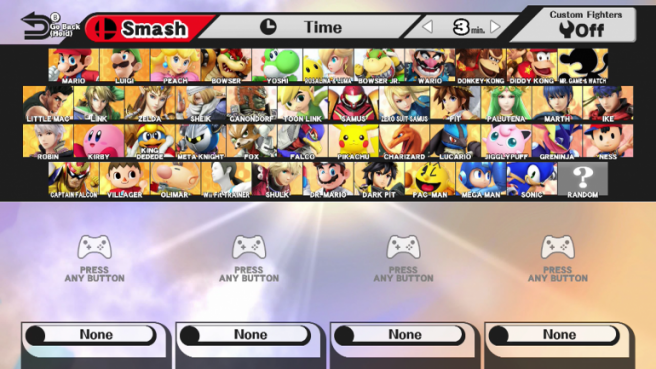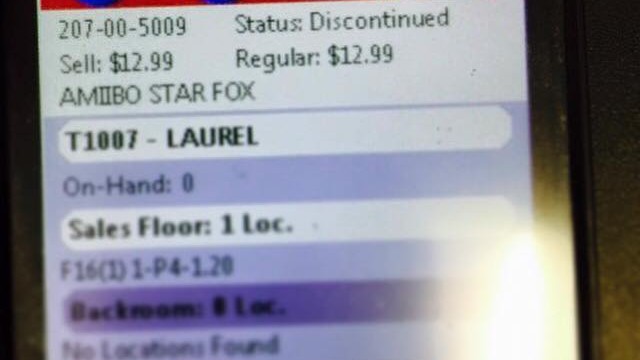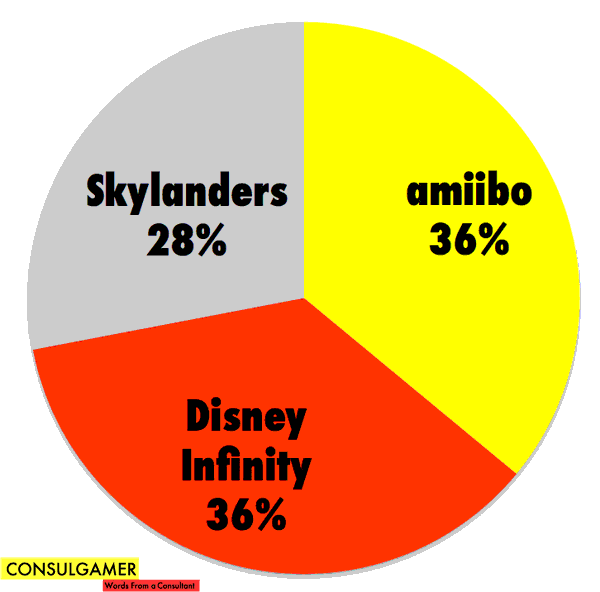Sakurai talks Smash Bros. patches, thoughts on competitive play
Posted on 11 years ago by Brian(@NE_Brian) in 3DS, General Nintendo, News, Wii U | 71 Comments
More excerpts from Nintendo Dream’s interview with Smash Bros. director Masahiro Sakurai are now available.
In these latest translations, Sakurai talks about patches – such as the timeframe for the latest patch, and the possibility of future updates. He also shares some thoughts regarding competitive Smash Bros. play.
Head past the break for all of Sakurai’s comments.
Club Nintendo Europe currently experiencing issues
Posted on 11 years ago by Brian(@NE_Brian) in General Nintendo, News | 0 comments
Unfortunately, Club Nintendo Europe is down at the moment. Nintendo says that the issues are due to a power cut. The situation is currently being looked into, and service will be restored as soon as possible.
We're currently experiencing problems with the Club Nintendo service and are working to get it resolved. Thank you for your patience
— Nintendo of Europe (@NintendoEurope) December 31, 2014
The problems we're currently experiencing with the Club Nintendo service are due to a power cut. We apologise for the inconvenience.
— Nintendo of Europe (@NintendoEurope) December 31, 2014
More: Club Nintendo, Europe
Additional defective amiibo: Diddy without a jaw, dual-wielding Pit, and more
Posted on 11 years ago by Brian(@NE_Brian) in General Nintendo, Images | 9 Comments
You didn’t think defective amiibo would stop appearing anytime soon, did you? Well, we have four new ones to share: Diddy Kong without a jaw, a dual-wielding Pit, Peach with backwards legs, and Samus without a foot. View the gallery above for snapshots of each.
While we’re on the topic of defective amiibo, you’ve probably noticed that we’ve been talking about them less and less. The fact of the matter is that defects constantly appear across all types of products. That’s why we won’t be featuring defective amiibo on a regular basis… unless we feel that they’re interesting!
More: Amiibo
Rumor: Samus, Fox amiibo discontinued at Target stores
Posted on 11 years ago by Brian(@NE_Brian) in General Nintendo, Rumors | 4 Comments
Although we don’t have official confirmation, it’s looking like the Samus and Fox amiibo could be phased out at Target stores. Employee Zach “iamxZ3R0” Collins shared the photo above on Facebook, which indicates that the Fox figure is no longer available. Zach has also apparently confirmed that Samus is showing as discontinued as well.
FUNimation picks up the rights for Samurai Warriors anime
Posted on 11 years ago by Brian(@NE_Brian) in General Nintendo, News | 2 Comments
FUNimation announced today that it has acquired the rights for Koei Tecmo’s Samurai Warriors anime. Fans can watch the first episode on January 11, and the show will join FUNimation’s Winter 2015 Simulcast season.
Here’s the official synopsis:
Based on the hit video game, this dramatic re-imagining of one of Japan’s most revered historical periods drops audiences into the middle of an epic battle royal. Great warriors and dashing rogues from cherished Japanese tales come to life in this rousing series. Follow along as your favorite hacking, slashing characters from the video game meet once more on the field of battle. Every deadly move you perfected in the game is recreated in the action-packed anime experience that is Samurai Warriors!
More: anime, FUNimation, Koei Tecmo, Samurai Warriors
Captain Toad re-imagined as a Game Boy Color game
Posted on 11 years ago by Brian(@NE_Brian) in General Nintendo, Videos, Wii U | 2 Comments
What would Captain Toad look like if it were on the Game Boy Color? One person may have the answer!
Take a look at artist Johan Vinet’s attempt at re-imagining Captain Toad for the classic portable:
CAPTAIN TOAD on the New Game Boy Color 😉 #8bit #pixelart #CaptainToad pic.twitter.com/H9AfrJnDrn
— Johan Vinet (@johanvinet) December 30, 2014
What we know about the cancelled N64 title Doom Absolution
Posted on 11 years ago by Brian(@NE_Brian) in General Nintendo, News | 1 Comment
Back in the day, Midway San Diego and id Software were planning Doom Absolution – otherwise known as the sequel to Doom 64.
According to Unseen64, Doom Absolution would have been a multiplayer-focused game. The original intention was to develop a 2-player deathmatch mode.
Doom Absolution ended up seeing cancellation in 1997, though it was still in early development at the time. While not confirmed, the project may have been canned since the Doom engine looked dated and the team decided to work on the Quake 64 port instead.
Nintendo Minute – Game of the Year: Finals
Posted on 11 years ago by Brian(@NE_Brian) in General Nintendo, Videos | 1 Comment
More: Nintendo Minute
amiibo figures are doing pretty well at Best Buy
Posted on 11 years ago by Brian(@NE_Brian) in General Nintendo, News | 12 Comments
amiibo figures appear to be doing quite well at Best Buy, a major retailer in North America.
CONSULGAMER reports that “A review of Best Buy’s online sales show Disney INFINITY and amiibo in a dead-heat for the top 20 game-to-toys on the market – each having ten toys in the list.” If you expand to the store’s top 50 selling products on its website, amiibo and Disney Infinity are tied with 18 products in the top 50. Skylanders lags behind with 14 products.
Nintendo previously confirmed that 710,000 amiibo were sold in the U.S. over a three-week period.
amiibo compatibility list
Posted on 11 years ago by Brian(@NE_Brian) in General Nintendo, Images | 4 Comments
One fan has put together an amiibo compatibility list, which we’ve included above. The chart features recently-confirmed amiibo-supported games such as One Piece: Super Grand Battle! X and Ace Combat 3D: Cross Rumble +.







